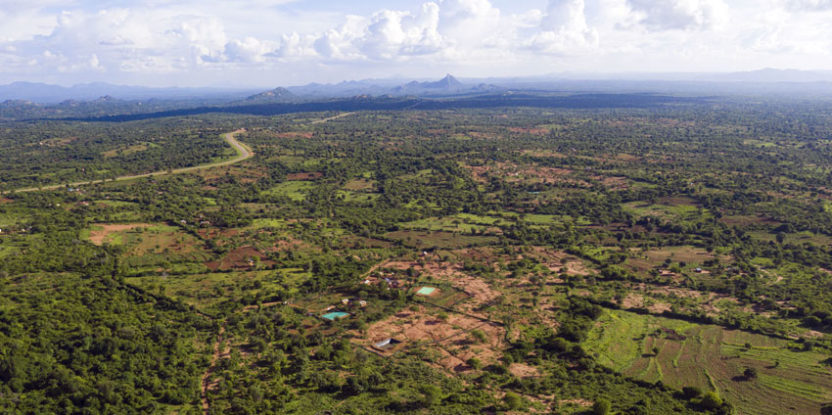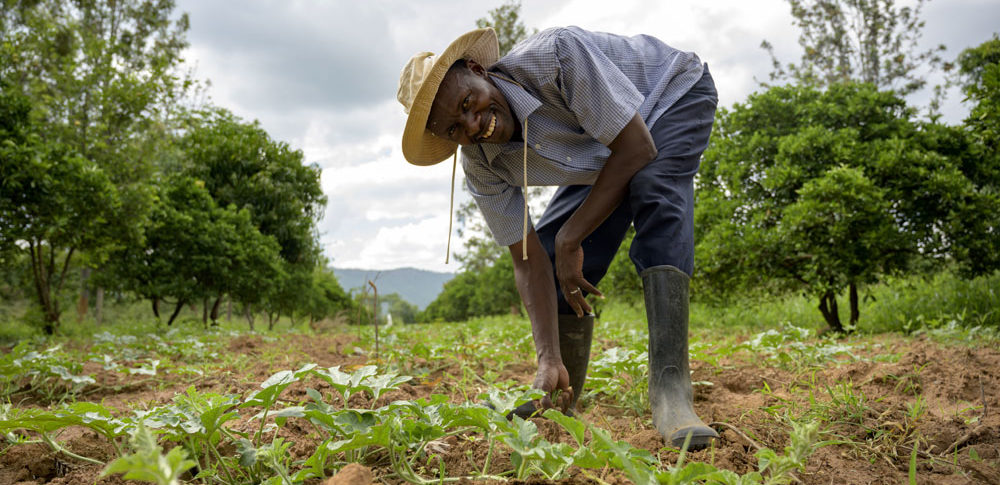Talk around the U.N. Food Systems Summit (UNFSS) this week is, quite literally, about how sustainable food systems can emerge from the ground upwards.
Given that around 95 percent of all our food originates from soils, how we use and protect soil health is in the UNFSS spotlight.
Soil is much more than the dirt beneath our feet.
Soil health is the very foundation of food systems and provides many vital ecosystem services, including agricultural productivity, flood regulation, nutrient cycling and carbon sequestration. In addition, it hosts more biodiversity in one teaspoon than there are humans on Earth.
These thriving communities of soil biota drive the very processes that sequesters CO2, locking away carbon in soil stores and avoiding its damaging release into the atmosphere.
They also cycle the nutrients needed to sustain ongoing annual crop and animal yields, providing nutritious and healthy foods, and the fuel and fiber needed for thriving economies and livelihoods.
Without healthy soil we cannot produce sufficient food to feed everybody and we will struggle to curb average temperatures and stop them from rising more than 1.5 degrees Celsius above pre-industrial times as agreed in the U.N. Paris Agreement. Really, the importance of healthy soil to our very existence cannot be over overstated.
As Rattan Lal, the 2020 World Food Prize laureate, said during the pre-Summit “Healthy Soil = Healthy People = Healthy Animals = Healthy Planet.”
Why are we only now opening our eyes to the importance of healthy soils?
Farmers, business leaders, researchers, development organizations and many other communities have been shouting about the importance of soil health for some time.
We just haven’t heard them.
But perhaps our collective reconsideration of human’s relationship with nature brought about by the COVID-19 pandemic and the climate emergency has given us all pause for thought. By bringing these voices together in multi-stakeholder dialogues at the U.N. Pre-Summit in July 2021, and the Summit this week, the message that soils are center-stage in the actions needed to steer food systems to better serve people, climate and nature is now being heard.
The good news is that soils can produce abundant food, fuel and fiber in ways that restore soil health, reduce pollution, erosion and damage to waterways, help mitigate CO2, and secure resilient livelihoods. Nature-positive food production, which includes regenerative agriculture — food production that replenishes soil nutrients as opposed to depleting them — has the potential to do all this and transform our food systems.
How to scale healthy soil practices globally?
Many farmers already apply practices that maintain and build healthy soil. Yet, in order to reach ecosystem restoration targets, climate change goals, U.N. Sustainable Development Goals, achieve Land Degradation Neutrality and food and nutrition security needs, many more farmers need to be scaling up healthy soil practices.
Unfortunately, not every farmer has the financial or technical means to transition to more sustainable agricultural practices. And it’s not just funding that they need – training and value chains must be accessible, particularly to the 500 million smallholders, many of whom are women and youth, who have the greatest difficulty in accessing these resources.
Despite the growing business case for investments in practices that build soil health, an “investment gap” remains. Conversation with business leaders around the UNFSS are spreading the word – the private sector is waking up to the potential for attractive returns from investing in healthy soils, particularly where they can demonstrate the protection and storage of soil carbon.
Innovations in mapping and monitoring of key soil health indicators, including soil organic carbon, are ready to support these investments by providing reliable and cost effective monitoring of changes over time. These maps are produced at scales relevant to various stakeholders to inform decision making at multiple levels.
Building a Coalition of Action for Soil Health
In order to address these key issues, the Coalition of Action 4 Soil Health (CA4SH) (The Global Soil Hub) has formed with support from Member States, U.N. Convention to Combat Desertification (UNCCD), Farmers Organizations, Research Organizations, Development Partners and the Private Sector Guiding Group. This Coalition formed under Action Track 3: Boost Nature Positive Production.
The overarching goal of CA4SH is to improve soil health globally by addressing critical implementation, monitoring, policy, and public and private investment barriers that constrain farmers from adopting and scaling healthy soil practices.
The Coalition of Action 4 Soil Health (CA4SH) was inspired by the UNFSS and will continue to thrive beyond the Summit. Become part of the global community to restore soil health and support farmers with equitable and transparent financial mechanisms, technical support for implementing healthy soil practices.
As of 21 September there has been an outpouring of support for the coalition, with over four member states, three international organizations, six research organizations/universities; 25 farmer organizations and non-governmental organizations; three national research organizations, the Private Sector Guiding Group with 10 chief executive officers signing off on letters of support for the coalition. The CA4SH working group has representation from 26 international organizations — and it is still growing.
To join the coalition please reach out by 1) Contacting L.A.Winowiecki@cgiar.org and 2) Registering your support for the Coalition of Action 4 Soil Health online with the UNFSS by clicking here.
We want you to share Forests News content, which is licensed under Creative Commons Attribution-NonCommercial-ShareAlike 4.0 International (CC BY-NC-SA 4.0). This means you are free to redistribute our material for non-commercial purposes. All we ask is that you give Forests News appropriate credit and link to the original Forests News content, indicate if changes were made, and distribute your contributions under the same Creative Commons license. You must notify Forests News if you repost, reprint or reuse our materials by contacting forestsnews@cifor-icraf.org.

